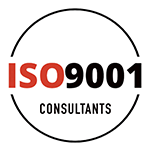Customer satisfaction is crucial for any business. Happy customers are more likely to return and recommend your services to others. ISO 9001, an international standard for quality management systems, can significantly help in improving customer satisfaction. ISO 9001 sets out criteria that ensure quality products and services by focusing on various management principles.
Implementing ISO 9001 involves understanding these principles and applying them to your business processes. This helps in maintaining consistency and meeting customer expectations. Clear documentation, regular audits, and continuous improvement are some of the core aspects of ISO 9001 that contribute to higher customer satisfaction.
By adopting ISO 9001, businesses can create a customer-focused environment. It allows us to identify and address customer needs efficiently. This standard not only helps in preventing issues but also in resolving them promptly when they arise. Consequently, customers feel valued and are more likely to stay loyal to the business. Leveraging ISO 9001 practices leads to a systematic approach to quality management, which is essential for achieving sustained customer satisfaction.
Understanding ISO 9001 and Its Principles
ISO 9001 is a globally recognised standard for quality management systems. It helps businesses ensure they meet customer and regulatory requirements through a structured framework focused on consistent quality and continuous improvement. The standard is based on several key principles that guide organisations in achieving sustained success.
- Customer Focus: Meeting customers’ needs is at the heart of ISO 9001. A strong focus on the customer ensures their requirements are understood and met consistently. This principle encourages businesses to seek feedback and use it to improve products and services.
- Leadership: Effective leadership establishes unity of purpose and direction. It creates an environment where employees are fully involved in achieving the organisation’s quality objectives. Leaders provide clear visions and engage employees in meeting these goals.
- Engagement of People: Engaging employees at all levels enhances their ability to create value. It’s vital to recognise their importance, involve them in decision-making, and equip them with the necessary resources and training.
- Process Approach: Understanding and managing processes as a system contributes to efficiency. This approach involves identifying key processes, mapping their interactions, and optimising them to achieve consistent results.
- Improvement: Continuous improvement remains a permanent quality objective. Businesses must constantly seek ways to enhance performance. This includes setting targets, measuring progress, and implementing changes based on data-driven insights.
- Evidence-Based Decision Making: Decisions based on the analysis and evaluation of data are more likely to produce desired results. This principle stresses the importance of using accurate data to make informed decisions.
- Relationship Management: Maintaining good relationships with stakeholders, including suppliers and customers, is crucial. Effective relationship management improves communication, trust, and performance across the supply chain.
By adhering to these principles, businesses can build a robust quality management system that enhances efficiency and customer satisfaction.
Key Ways ISO 9001 Enhances Customer Satisfaction
ISO 9001 provides a structured approach to improving customer satisfaction. It does this through several key mechanisms that ensure the delivery of high-quality products and services, leading to happier customers.
- Consistent Quality: One significant way ISO 9001 boosts customer satisfaction is by ensuring product and service consistency. Customers appreciate knowing they will receive the same high-quality results every time they interact with the business. This consistency helps build trust and reliability.
- Feedback Mechanisms: ISO 9001 encourages businesses to actively seek and respond to customer feedback. By implementing systems to gather, analyse, and act on feedback, businesses can address issues quickly and make improvements. This responsiveness enhances customer satisfaction by showing that their opinions matter.
- Problem Resolution: With ISO 9001, businesses establish clear procedures for identifying and resolving problems. This means any issues that arise are dealt with promptly and effectively. Customers feel valued when their concerns are addressed without delay, leading to a positive experience.
- Continuous Improvement: Continuous improvement is a core element of ISO 9001. This principle helps businesses keep enhancing their processes, products, and services. By always striving to improve, companies can exceed customer expectations and deliver added value.
- Employee Involvement: Engaging employees in quality management ensures they are motivated to meet customer needs. When employees understand their role in delivering quality, they are more likely to take responsibility and pride in their work. This leads to better performance and higher customer satisfaction.
- Efficient Processes: ISO 9001 promotes the optimisation of processes. Efficient, well-managed processes reduce errors and delays, resulting in timely delivery of products and services. Customers appreciate prompt and reliable service, which enhances their satisfaction.
By focusing on these areas, businesses can significantly improve customer satisfaction. Implementing ISO 9001 helps ensure that customers receive consistent, high-quality products and services, fostering trust and loyalty.
Practical Steps to Implement ISO 9001 for Better Customer Satisfaction
Implementing ISO 9001 can seem challenging, but with clear steps, it becomes manageable. Here are some practical steps to help businesses implement ISO 9001 effectively and enhance customer satisfaction.
- Understand the Requirements: Begin by thoroughly understanding ISO 9001 requirements. Familiarise yourself with the principles and criteria. This understanding forms the foundation for successful implementation.
- Conduct a Gap Analysis: Perform a gap analysis to compare current practices with ISO 9001 requirements. Identify areas needing improvement and develop an action plan to address these gaps. This step ensures targeted efforts towards compliance.
- Develop a Quality Management System (QMS): Create a QMS tailored to your business needs. Document processes, procedures, and responsibilities. Ensure the QMS aligns with ISO 9001 principles, fostering consistency and quality in service delivery.
- Engage Employees: Involve employees at all levels in the implementation process. Provide training to make them aware of ISO 9001 standards and their role in maintaining them. Employee engagement ensures everyone contributes to quality management.
- Monitor and Measure: Establish metrics to monitor the effectiveness of the QMS. Regularly review these metrics to assess performance. Use the gathered data to make informed decisions and drive continuous improvement.
- Internal Audits: Conduct internal audits to ensure compliance with ISO 9001. Audits help identify weaknesses and areas for improvement. Addressing these issues promptly enhances the overall quality of the QMS.
- Management Review: Schedule regular management reviews to evaluate the achievement of quality objectives. Management involvement ensures that quality remains a priority and resources are allocated effectively.
Taking these steps ensures that ISO 9001 is implemented smoothly, leading to enhanced customer satisfaction through consistent quality and continuous improvement.
Measuring the Impact of ISO 9001 on Customer Satisfaction
Measuring the impact of ISO 9001 on customer satisfaction is crucial to understand its effectiveness. Businesses can use several methods to gauge this impact.
- Customer Feedback: Regularly collect customer feedback through surveys, reviews, and direct communication. Analyse this feedback to identify trends and areas for improvement. Positive feedback indicates that ISO 9001 is enhancing customer satisfaction.
- Customer Complaints: Monitor and analyse customer complaints. A decrease in complaints suggests that quality has improved, leading to higher customer satisfaction. Addressing complaints promptly also boosts customer trust and loyalty.
- Customer Retention Rates: Track customer retention rates before and after implementing ISO 9001. Higher retention rates indicate that customers are satisfied with the consistent quality of products and services.
- Performance Metrics: Use performance metrics such as on-time delivery, product defects, and service efficiency. Improvements in these areas signify a positive impact on customer satisfaction. Consistent performance builds customer confidence.
- Internal Audits and Reviews: Conduct regular internal audits and management reviews. These checks ensure that the QMS remains effective and aligned with customer needs. Continuous monitoring and adjustment help maintain high satisfaction levels.
- Competitor Comparison: Compare your performance and customer satisfaction levels with competitors. A higher satisfaction rate compared to industry standards shows the effectiveness of ISO 9001 implementation.
By employing these methods, businesses can accurately measure the impact of ISO 9001 on customer satisfaction. This measurement helps identify strengths and areas for further improvement.
Conclusion
ISO 9001 plays a vital role in enhancing customer satisfaction. By aligning business processes with ISO 9001 principles, we achieve consistent quality, which builds customer trust and loyalty. Understanding and implementing these principles helps create a robust quality management system. Practical steps such as employee engagement, monitoring performance, and conducting internal audits are essential in this process. Measuring the impact through feedback, complaints, and performance metrics ensures that we continue to meet and exceed customer expectations.
As we integrate ISO 9001 into our operations, we see significant improvements in both quality and customer satisfaction. These improvements are crucial for long-term success and competitive advantage. If you’re ready to enhance customer satisfaction in your business, reach out to ISO 9001 Consultants for expert guidance and support in implementing ISO 9001 standards. Let us help you achieve excellence and drive customer satisfaction to new heights.







